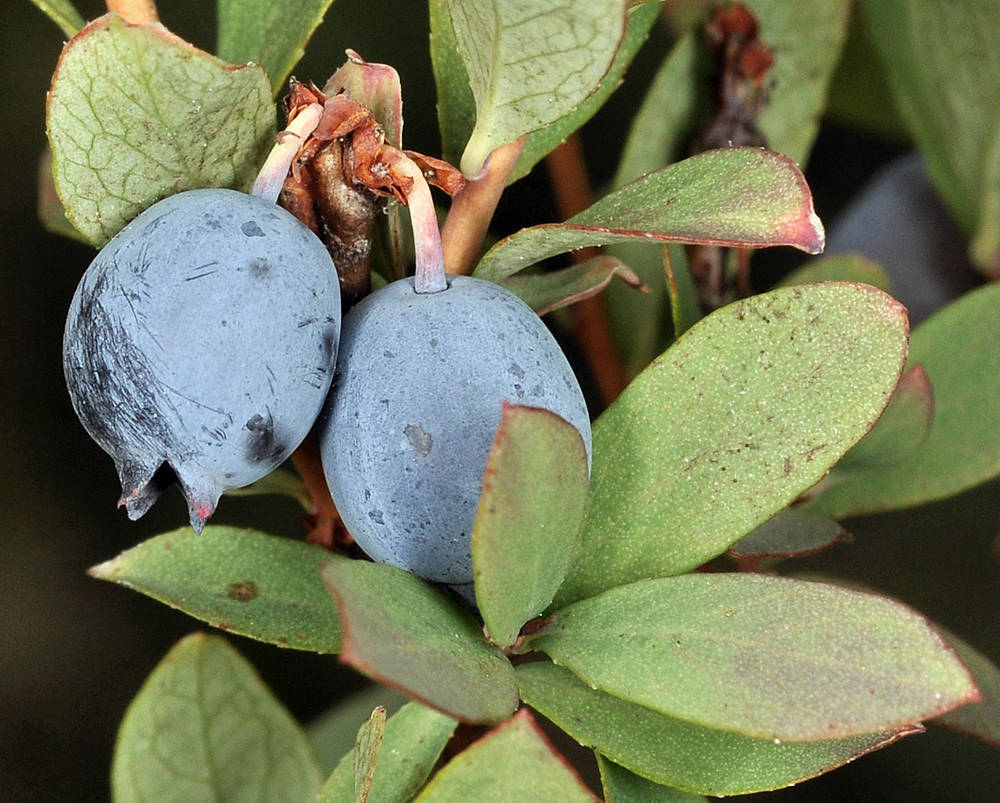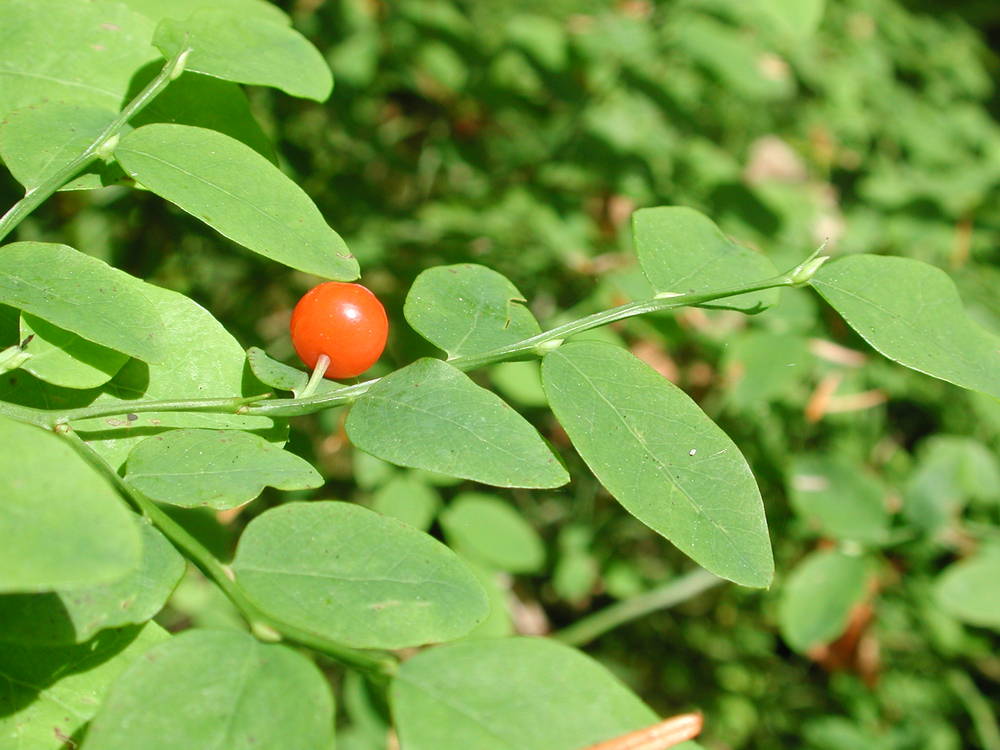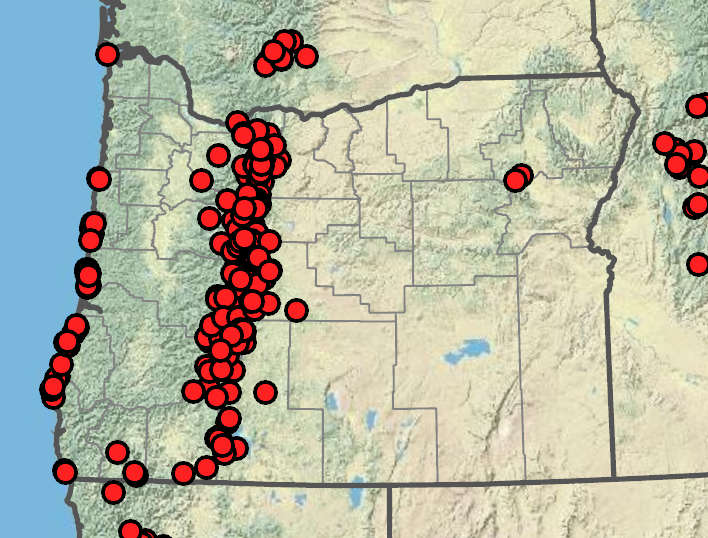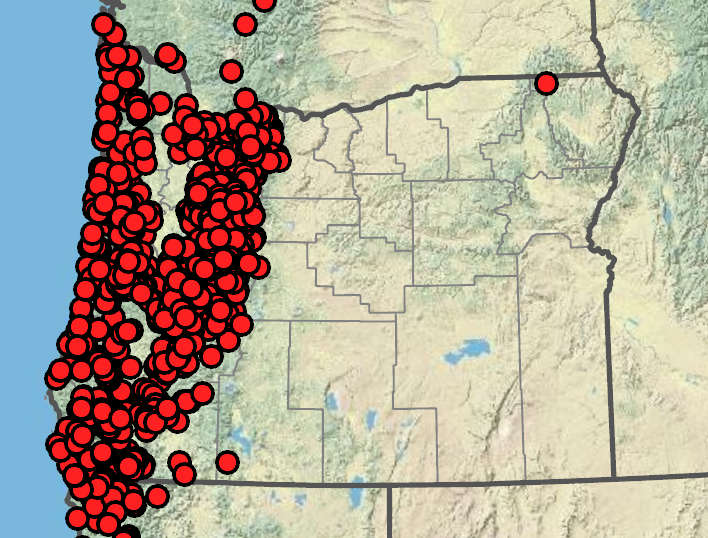Vaccinium uliginosum
Vaccinium parvifolium
bog bilberry, bog blueberry
red huckleberry
ovate to elliptic, 9–29 × 4–18 mm; thin or thick at maturity;
margins entire;
tips rounded to acute;
surfaces abaxially glabrous or glaucous, adaxially glabrous.
ovate to oblong-elliptic, 10–30 × 4–18 mm; thin;
margins usually entire, rarely minutely serrate;
tips usually rounded or sometimes acute;
surfaces abaxially glabrous to somewhat puberulent, adaxially glabrous but sometimes minutely puberulent along midrib.
racemes, 2–4-flowered, occasionally 1-flowered.
solitary flowers in axils.
distinct;
sepals 4 or 5, usually glaucous;
corollas urceolate, 4–6 × 2–5 mm, white to pink, glaucous;
petals 4 or 5;
filaments ? anthers, glabrous.
sepals 5;
calyx lobes green, glabrous;
petals 5;
corollas globose to urceolate, 4–6 × 3–5 mm; greenish yellow to pink, glaucous;
filaments ? anthers, glabrous.
4–9 mm in diameter, blue to bluish black, with a faint bloom.
6–10 mm in diameter, red, with a faint bloom.
=24, 48, 72.
=24.
Vaccinium uliginosum
Vaccinium parvifolium
Wet mid-elevation montane and coastal habitats. Flowering May–Sep. 0–2400 m. BW, Casc, ECas, Est, Sisk. CA, ID, NV, WA; northern US and Canada; Asia, Europe. Native.
Some authorities consider the coastal form of V. uliginosum a distinct species (V. occidentale). If recognized, this species would be identified by its distinctly reticulated leaf veins, thin leaves, and smaller fruits.
Coniferous forests, often on decaying wood. Flowering Mar–Jul. 0–1600 m. Casc, CR, Est, Sisk, WV. CA, WA; north to AK. Native.
Some old, semi-evergreen leaves of V. parvifolium may be minutely serrate and shiny, while most leaves are entire and dull. Thus, when using the above key, care must be taken to examine younger leaves for proper identification.
Stephen Meyers
Stephen Meyers
- Local floras:
BC,
OR,
WA
- Local Web sites:
Flora NW,
PNW Herbaria
WildflowerSearch
iNaturalist (observations)
USDA Plants Database
- LBJ Wildflower Center
- SEINet
- Plants of the World Online
- Encyclopedia of Life
- Wikipedia
- Google Image Search
- Local floras:
BC,
CA,
OR,
WA
- Local Web sites:
CalFlora,
CalPhotos,
Flora NW,
PNW Herbaria,
Turner Photog.
WildflowerSearch
iNaturalist (observations)
USDA Plants Database
- LBJ Wildflower Center
- SEINet
- Plants of the World Online
- Encyclopedia of Life
- Wikipedia
- Google Image Search





